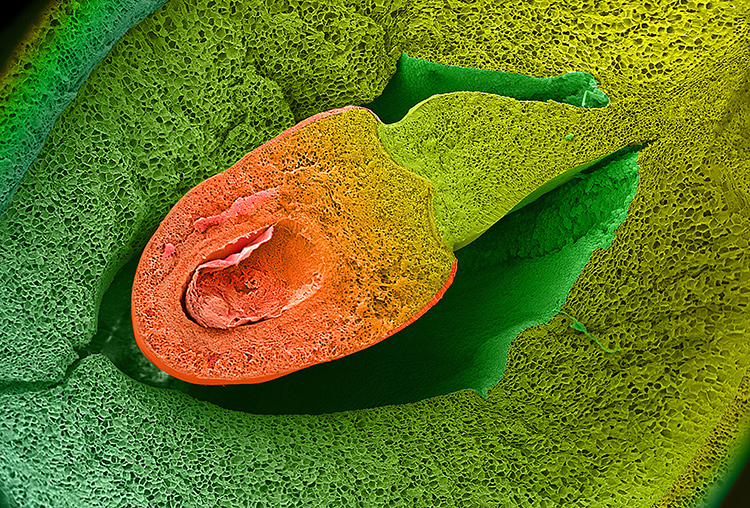
FIRST PLACE
“Cross-section through a bean—the picture was shot using a scanning electron microscope (SEM) and then digitally mastered.”
—Pascale Müller and Dan Curticapean, Offenburg University, Germany
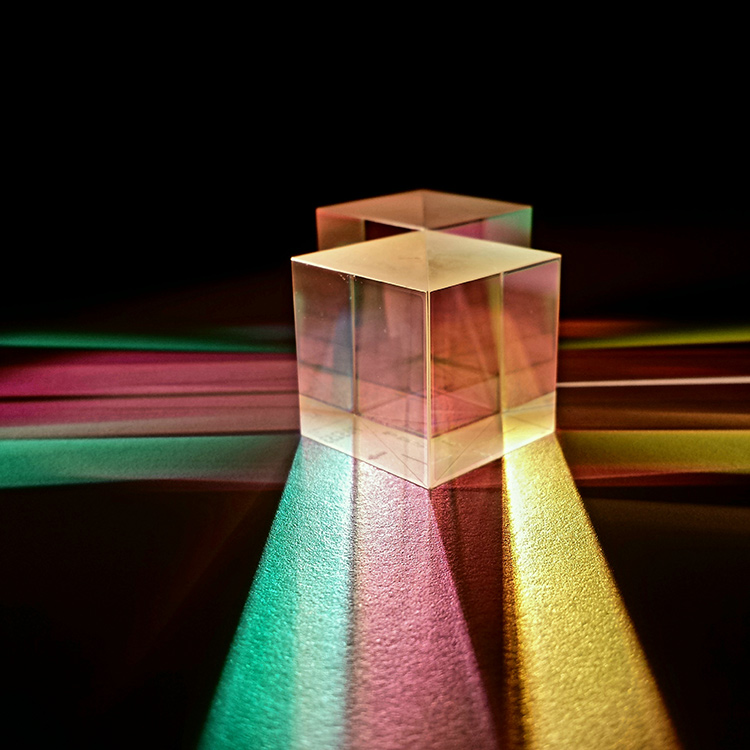
SECOND PLACE
“White light strikes a pair of beam-splitter cubes with antireflective coatings for infrared light. These coatings separate white light into its constituent colors. The surrounding lab environment was darkened to highlight the mesmerizing colors, captured in this picture with a cellphone camera. The texture of the sheet of paper on which the cubes were placed can be seen on the front of the image.”
— Gibraham A. Graciano, CICESE, Mexico
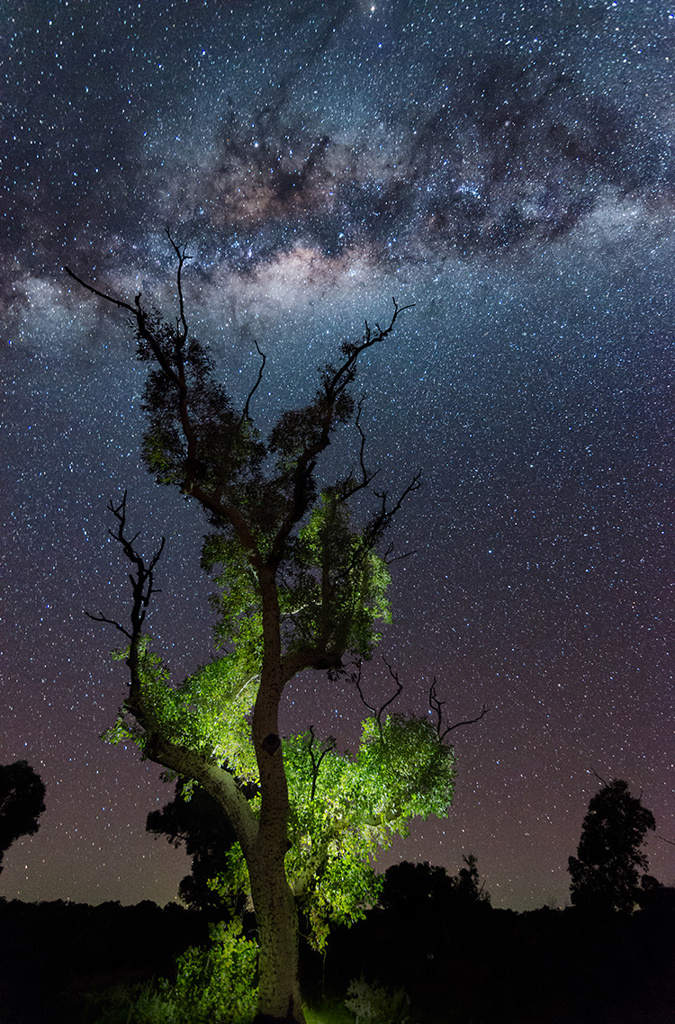
THIRD PLACE
“The galactic center of the Milky Way rising over a tree. During the 30-sec exposure, the tree was illuminated from behind with a torch [a flashlight]. The photo was taken in Karijini National Park in Western Australia. The southern hemisphere location, the absence of light pollution and the dry atmosphere offer perfect conditions to shoot the Milky Way.”
— Moritz Floess, University of Stuttgart, Germany
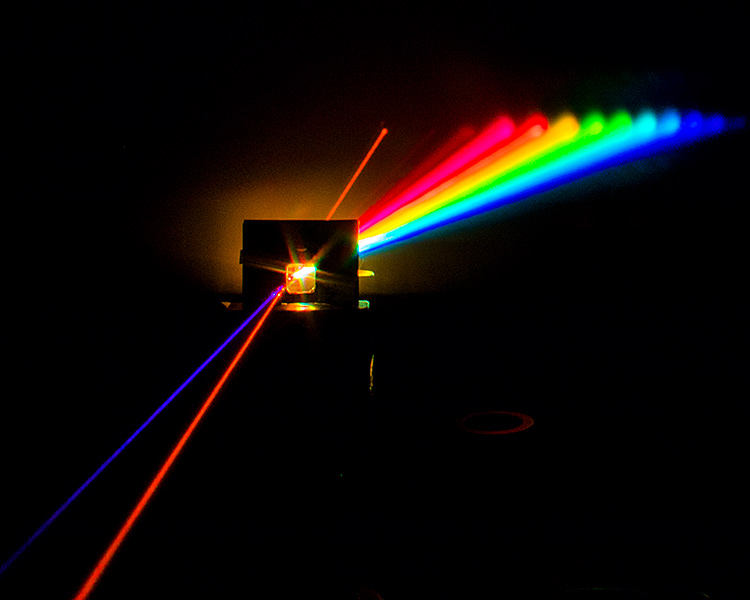
HONORABLE MENTION
“Generation of Raman sidebands in diamond. Two Gaussian laser beams, pump (purple), and Stokes (dark orange), enter a Raman medium (diamond) and generate a broadband of higher-order anti-Stokes. The photo was taken by moving a white screen in front of the beams during a 30-second time exposure of the camera.”
— Aysan Bahari and Dustin Scriven, Texas A&M University, USA
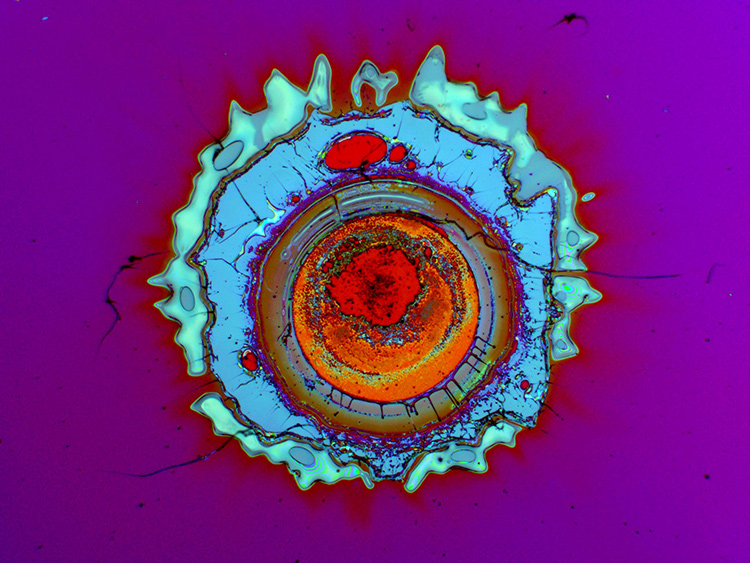
HONORABLE MENTION
“Laser-induced damage on a dielectric surface. When intense laser irradiation is applied on the optical surface it might get damaged: melted, cracked, delaminated. This is a microscopic picture of the laser damage morphology.”
— LIDARIS Laser Damage Testing Team, Vilnius, Lithuania
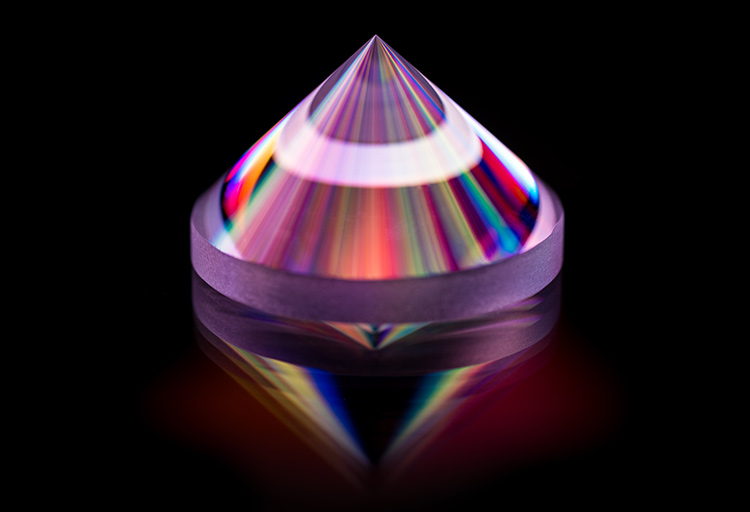
HONORABLE MENTION
“A solid-glass Fresnel cone, which uses total internal reflection of homogeneously polarized light to generate white-light OAM and radially polarized vector vortex beams. The glass cone is illuminated by a rainbow-colored light source in a long exposure. The image was taken in collaboration with the QuantIC imaging hub, based at the University of Glasgow, U.K.”
— Kevin J. Mitchell, University of Glasgow, U.K.
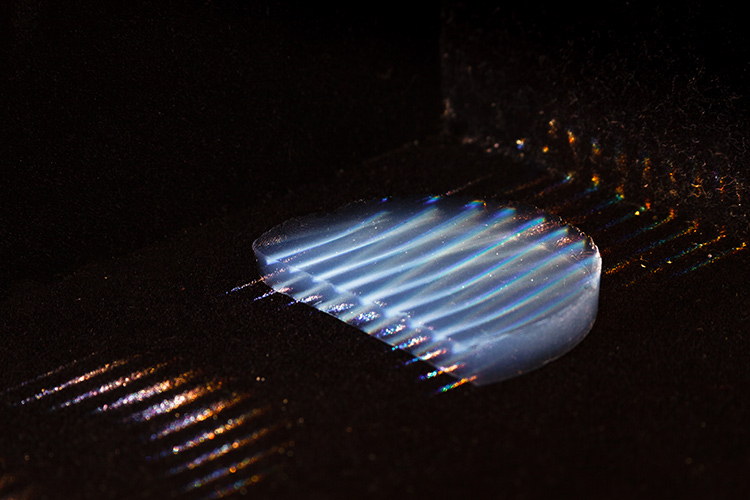
HONORABLE MENTION
“Multiple simulated solar-radiation beams penetrate in a low-scattering, high-clarity silica aerogel. Because of the weak scattering effect (especially toward the shorter wavelengths), the light path is visible and appears blue within the aerogel. Multiple mirrors in the solar simulator produced multiple light beams, which are then focused on the aerogel sample.”
— Lin Zhao, Massachusetts Institute of Technology, USA
For this year’s contest, OPN received 55 remarkable entries. We thank the panel of judges who provided insight on those images and helped select the winners: Felipe Beltrán-Mejía, Instituto Nacional de Telecomunicações, Brazil; Svetlana Boriskina, Massachusetts Institute of Technology, USA; Rocío Borrego-Varillas, Consiglio Nazionale delle Ricerche–IFN, Italy; Alvaro Casas Bedoya, University of Sydney, Australia; Mihaela Dinu, LGS Innovations, USA; Alexandre Fong, TruTag Technologies, USA; Giovanni Milione, NEC Laboratories America, USA; Arlene Smith, Avo Photonics, USA; Joel Villatoro, University of the Basque Country, Spain; and Stephen R. Wilk, Xenon Corp., USA.
You can see all of this year’s contest entries online at www.osa-opn.org/contest/2019.
